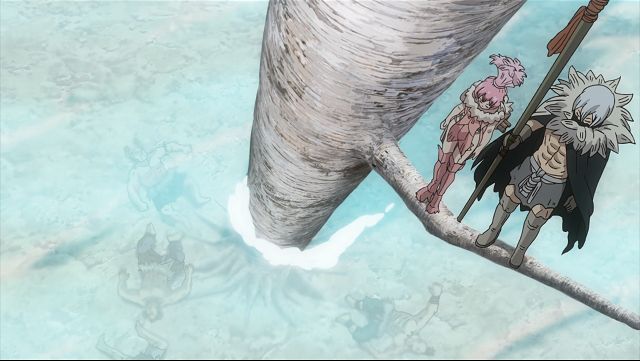Things are quiet at Eleanor West’s Home for Wayward Children. Cora and Christopher still long for their doors, Onishi Sumi is still alive, and Kade still rules the roost. And then a door made of lightning appears in Christopher’s basement dorm room, delivering a twice-resurrected Alexis and an unconscious Jill Wolcott. No, not Jill. Jack. Having been dead before, the Master cannot turn his beloved Jill into a vampire, but one quick and painful body swap and Jill has herself a nearly identical and conveniently never-been-dead new body. With the future of the Moors becoming increasingly unstable and Jack’s sanity crumbling with each passing moment, she and Alexis seek the help of their Wayward friends. Christopher, Cora, and Kade learn the hard way that they are not welcome to the land of bloodthirsty monsters and heartless gods.
Seanan McGuire’s Wayward Children series is a long story about home—the ones we’re born into and the ones we find or build—but with each new installment a second parallel theme has grown in importance: identity. You can’t really have one without the other. A home that denies your truth isn’t a home at all. Likewise, people who accept you as you are and without conditions can create a home where once there was none. The Moors is Jack’s home literally and figuratively because it matches her identity, and her identity is what led her to her true home in the first place. She is perfect for the role of Mad Scientist’s Apprentice in a horror movie world.
Out of the many things that make McGuire so compelling is the deliberate yet considerate way she engages with diversity. It’s not uncommon (but it is exceptionally frustrating) for fiction authors to reduce a character to a single identity, especially when that character is the only one with that particular trait. Think about how many books you’ve read with only one token queer person or character of color in a vast cast of cishet white people and whose queerness or race makes up the sum total of that character’s existence. Wayward Children pushes against lazy and tokenized diversity by making it part and parcel of the characters and the story.
There are multiple characters of color, who are fat, who are on the queer spectrum, who are disabled, who are neurodiverse, who do not meet or actively reject western standards of beauty. Most children have several intersecting layers of identity that inform how they navigate the worlds and how they interact with others. These identities guide the child to their door and give them a world where the thing that the real world rejected becomes the thing the portal world celebrates.

Jack’s obsessive compulsive disorder informs much of her personality and is the undercurrent to the plot in Come Tumbling Down. It is why she returns to Eleanor West’s school, why she cannot remain in Jill’s body, and why she must win her challenge against the Master. She is trapped in a body conditioned for the use and pleasure of a vampire lord rather than the girl to whom the body originally belonged. Jack is literally submerged in guts and grime, unable to scrub clean her body or mind. That this dysmorphia will eventually drive her mad is a fact she comprehends but cannot prevent.
Come Tumbling Down opens with something Jack said to Alexis in Down Among the Sticks and Bones but which finds new relevance here:
I am what I am, and there’s much about me that won’t be changed with any amount of wishing or wanting. I’m sorry for that. I’d trade a great deal to share an afternoon in the hay with you, dust in the air and sweat on our skins and neither of us caring. But I’m afraid the experience would drive me mad. I am a creature of sterile environments. It’s too late for me to change.
Jack unwittingly predicted her latest predicament. Jack is exactly who she is regardless of whose body she’s currently occupying, and she will not apologize or feel shame for it. Yet she also doesn’t use her OCD as an excuse to brush aside vile behavior. She has done monstrous things in the names of science and stability, but that doesn’t make those acts any less monstrous. Jack goes into Come Tumbling Down determined to kill her sister for a second and final time and feels about as much remorse for her decision as Jill does for stealing her sister’s body. The Moors and the Wolcott sisters alike are creatures of hard Logic and rationalized Wickedness, however each sister wields those definitions very differently. As unapologetic as Jack is for being the truest version of herself, so too is Jill.
The Wayward Children series started off great with Every Heart a Doorway and has only gotten better with each installment. Come Tumbling Down is a vibrant story told in visceral character work and vivid settings. It is everything Seanan McGuire is best at and then some. Now if you don’t mind I’m off to reread the entire series for the millionth time.
Come Tumbling Down is available now from Tor.com Publishing.
Read the first three chapters here.
Alex Brown is a teen services librarian by day, local historian by night, author and writer by passion, and an ace/aro Black woman all the time. Keep up with her on Twitter and Insta, or follow along with her reading adventures on her blog.











Recent Comments